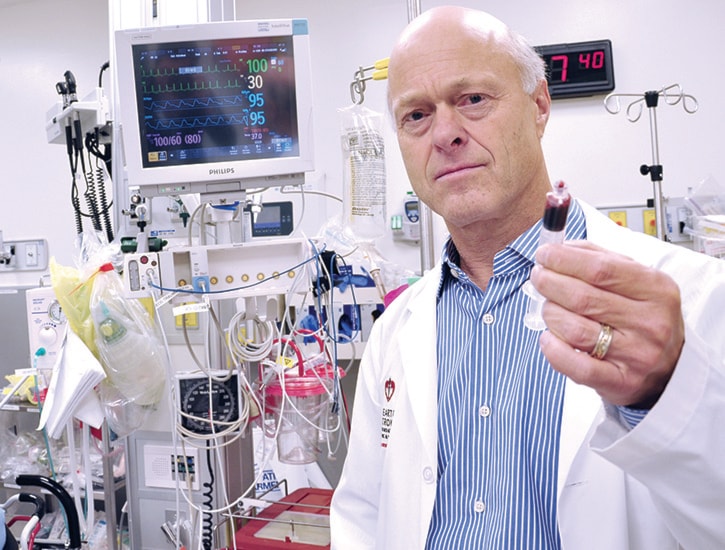When it comes to detecting strokes, the brain is a bit of a black box.
On Vancouver Island, chances are a person who has sudden slurred speech or an intense headache will be referred to Dr. Andrew Penn at Victoria General Hospital. There’s also a chance the person will be sent home with an undetected underlying condition that could lead to a deadly or debilitating stroke.
Giving emergency room doctors the tools to quickly detect strokes and their precursors, transient ischemic attacks (TIAs), is an intensely difficult problem. Penn, a neurologist and the medical lead for Island Health’s stroke rapid assessment unit, is leading the charge to crack open the brain, figuratively, to tease out those warnings that something has gone haywire.
“If you think about a heart attack, the symptoms are well known to the public and ER docs – chest pains and shortness of breath. There are a narrow range of things that mimic that,” Penn says.
The problem is that symptoms of strokes and TIAs have dozens of mimics – such as dizziness, shortness of breath, migraines – and figuring out the real thing requires time consuming and expensive scans using radiation, CT or MRI machines.
“For strokes, the public doesn’t know the symptoms, and there’s a one in nine chance the doctor has had stroke training. There are no blood tests, no ECGs, only high-end imaging,” he says. “So how do we support (ER doctors) when they have a full tilt job? It’s a tough job diagnosing brain stuff. If the brain goes wrong, what does that look like?”
To answer that question, Penn is overseeing a four-year $10 million project, the largest research project in Island Health’s history, to revolutionize early stroke detection in Canada. Announced March 2013, it’s taken a year to get the pieces in place to fully wed research and clinical care, while satisfying B.C. intense medical privacy laws. It’s a significant culture shift, Penn says.
“Medicine tends to go into crisis intervention, putting out fires,” he says. “We know we have a system full of problems and aren’t delivering as nearly good care as we can. We are gearing up to fix that.”
In January, Penn’s stroke unit and a partner hospital in Calgary started collecting the 4,000 blood samples from people exhibiting TIAs and strokes. The University of Victoria’s Genome B.C. Proteomics Centre at the Vancouver Island Tech Park will use powerful computers to weed out a common set of proteins in those blood samples that signal a stroke event. It’s not certain that such a signal exists.
“That is the $10 million question,” said Dr. Brad Popovich, chief scientific officer with Genome B.C., the main funder of the project. “That said, it wouldn’t be funded if there wasn’t a rational basis to believe there is a signal.
“When patients come in, they could be having a stroke for a lot of reasons, there is a lot going on to try and find the common threads between groups. It takes a lot of patients and a lot of patience to sort through that data.”
Penn, 59, a resident of Metchosin who attended medical school at Cambridge University at age 19, set up the stroke rapid assessment unit at VGH 10 years ago and with it the groundbreaking database of every stroke or TIA victim on Vancouver Island. Now with 12,000 patient histories in the database, it’s considered the most comprehensive in the world.
From that database and using heady algorithms, Penn has amassed a set of common words and phrases used by stroke or TIA patients in describing their symptoms. That is being turned into an iPad tool for ER doctors to ask a series of questions to gauge the likelihood a patient is suffering a stroke or TIA. Penn expects that tool to be rolled out at VGH relatively soon.
“The great part about this is the impact this will have on the Island. The computer-based tool will have an impact right away,” Popovich said.
Penn says even if the protein analysis doesn’t yield the precision they’re aiming for, the four years of work will still improve rapid and early detection of strokes, a major factor in saving lives and reducing physical disabilities.
“We are setting ourselves a useful goal, but we don’t have to hit the moon. It will still be useful if we can take those 700 (patients) and filter them down to 100 or 50,” he says.
“We’ll do a better logistics job – we’ll have the right person giving the right treatment at the right time.”
